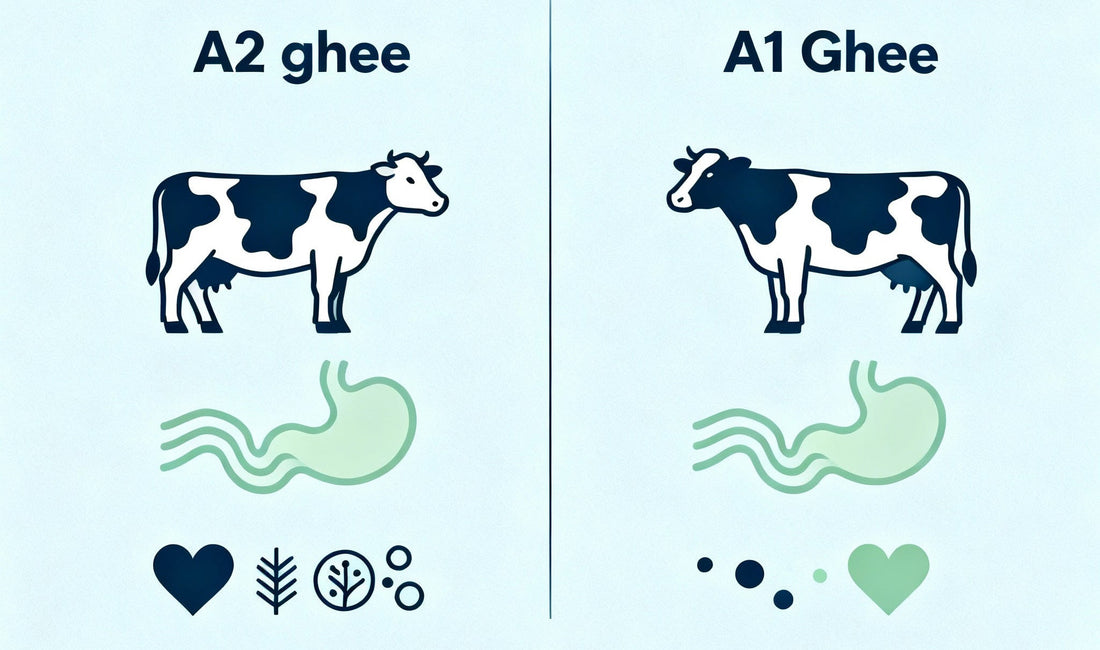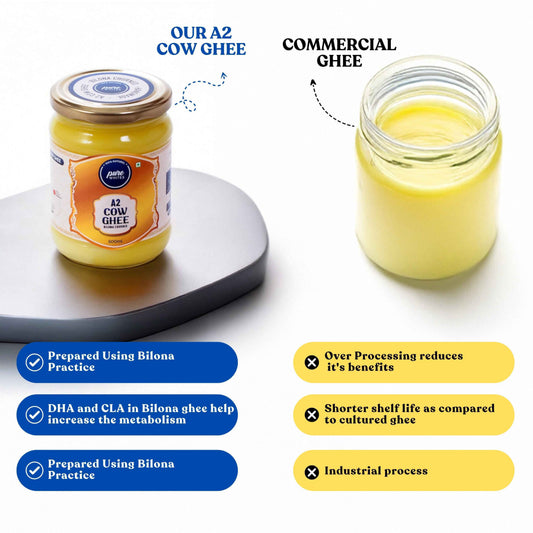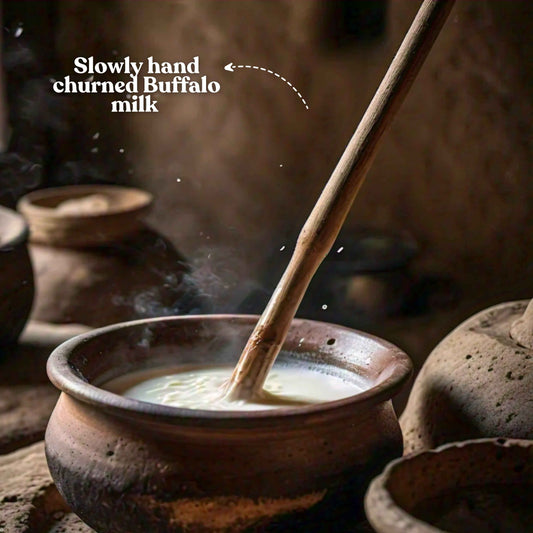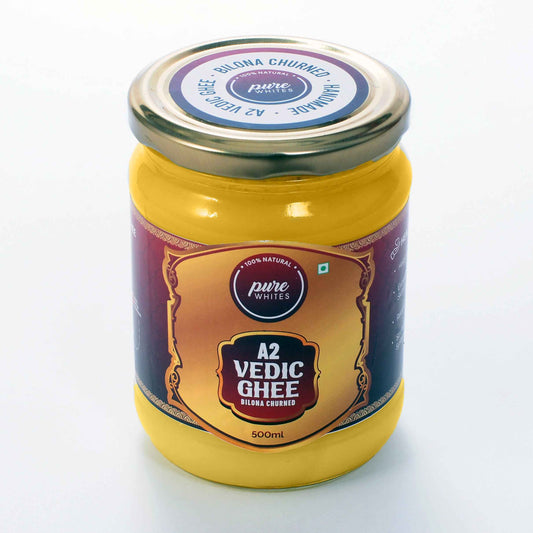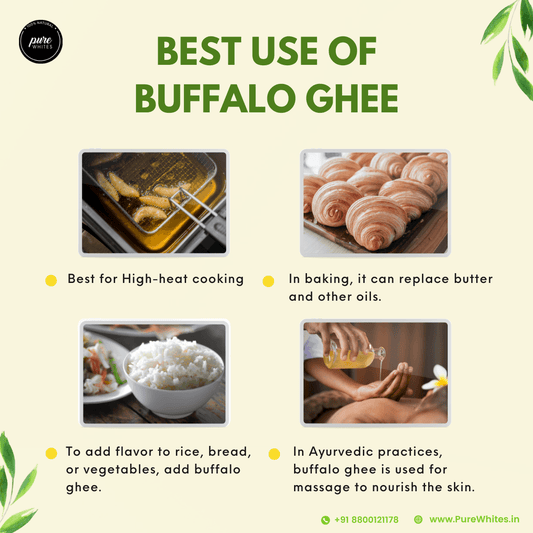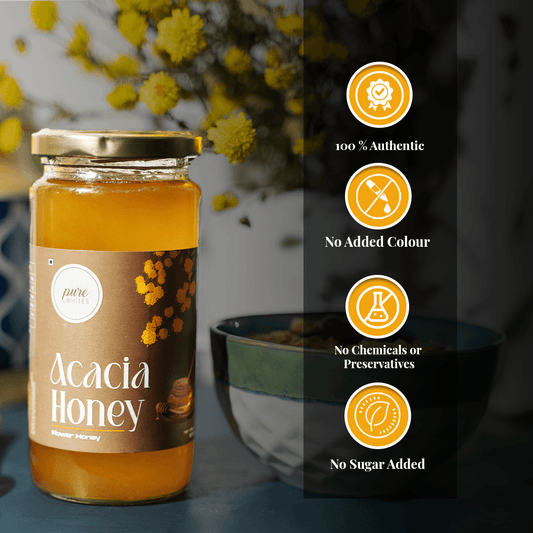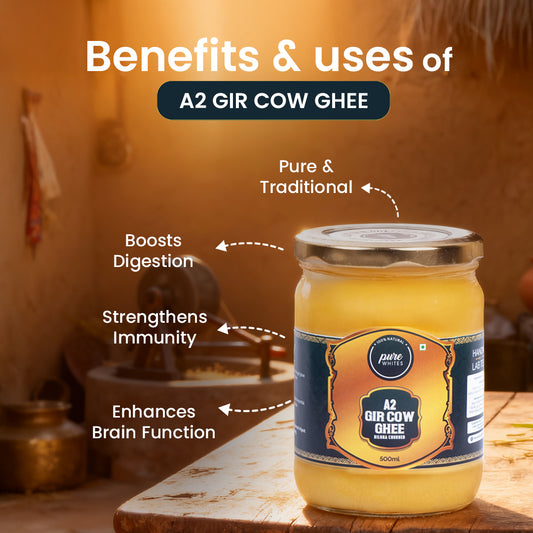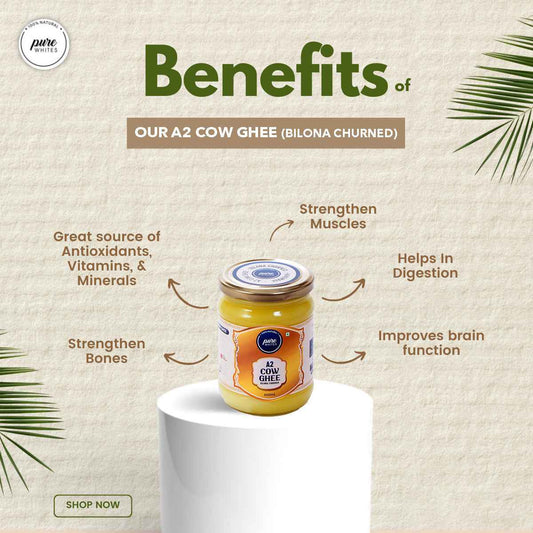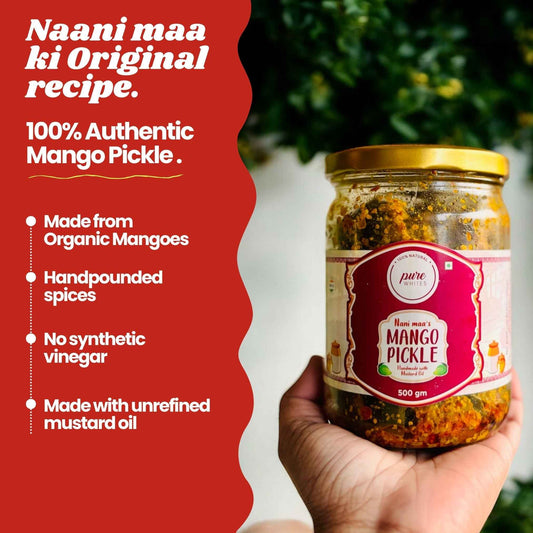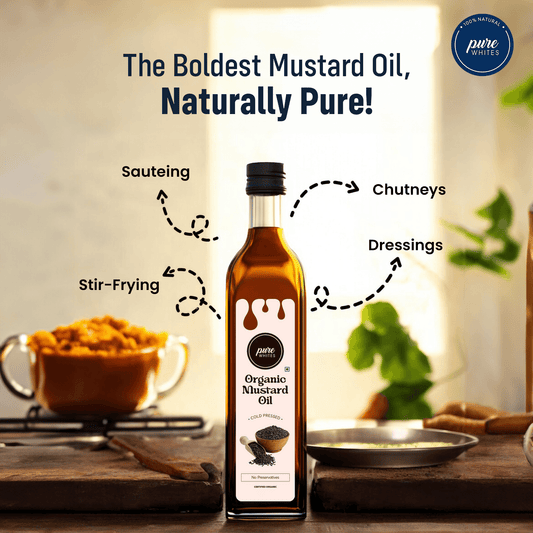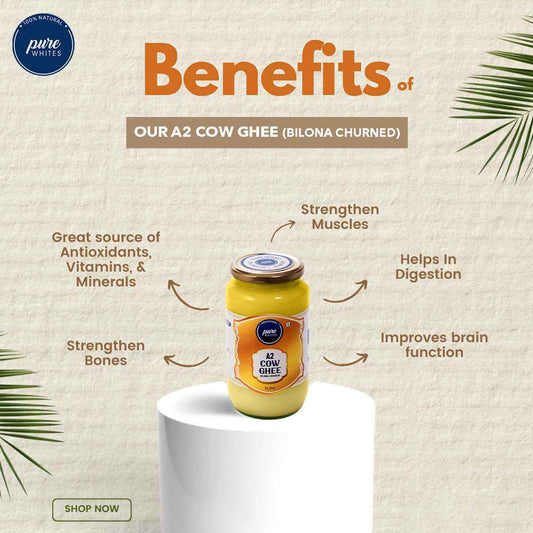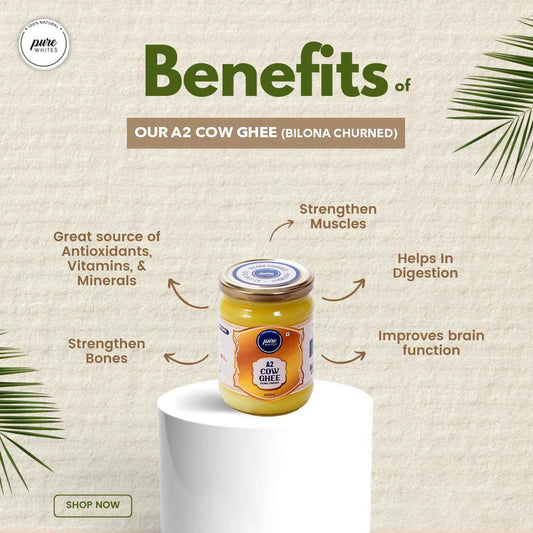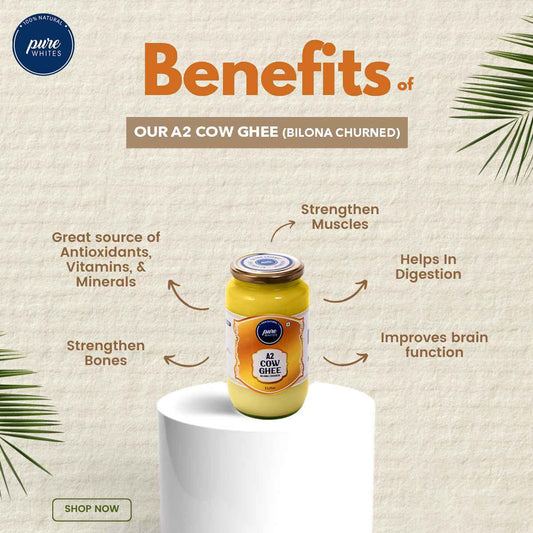Ghee has always held a special place in Indian kitchens and Ayurveda. But today, when you shop for ghee, you’ll often see two terms - A2 Ghee and A1 Ghee. At first glance, they look the same, but the difference lies in the type of milk they’re made from and that changes everything.
Here’s a simple breakdown of how A2 ghee is better than A1 ghee in terms of nutrition, health impact, and overall quality.
🐄 1. The Source of Milk
-
A2 Ghee: Made from indigenous Indian cow breeds (like Gir, Sahiwal, Tharparkar) that produce only A2 beta-casein protein in their milk.
-
A1 Ghee: Made from foreign or crossbred cows (like Jersey, Holstein Friesian) that produce A1 beta-casein protein.
💡 The protein difference is the root cause of how each type of ghee affects your body.
🧬 2. Digestibility
-
A2 Ghee: Easier to digest because it doesn’t release BCM-7 (Beta-Casomorphin-7) during digestion. Rich in butyric acid, it supports gut health and smooth digestion.
-
A1 Ghee: May release BCM-7, which has been linked to bloating, inflammation, and digestive discomfort in sensitive people.
💡 If you often feel uneasy after consuming dairy, switching to A2 ghee may help.
💛 3. Health Benefits
A2 Ghee provides:
-
Richer levels of Omega-3 fatty acids
-
Conjugated Linoleic Acid (CLA) for heart health
-
Beta-carotene, which gives it a natural golden yellow hue
-
Strong antioxidant properties
A1 Ghee, on the other hand:
-
Contains fewer of these beneficial fats
-
Lacks beta-carotene (often pale or whitish in color)
-
Offers basic energy but not the same depth of nutrients
🧘 4. Ayurvedic Perspective
In Ayurveda, cow ghee is considered medicine but it refers to ghee from indigenous cows, i.e., A2 ghee.
-
Used in Panchakarma therapies
-
Believed to nourish tissues, strengthen immunity, and calm the mind
-
Considered sattvic - promoting purity and balance
A1 ghee has no such reference in traditional Ayurvedic texts since foreign breeds didn’t exist in ancient India.
💰 5. Why A2 Ghee Costs More
-
Indigenous cows give only 4 - 6 liters of milk/day, while A1 breeds yield 20 - 30 liters.
-
A2 ghee is often made using the Bilona method - milk → curd → churned butter → slow cooking which is time-consuming and low-yield.
-
Ethical farming and natural feeding practices also add to the cost.
💡 The higher price isn’t just about branding it reflects scarcity, tradition, and quality.
✅ Final Thoughts
Both A1 and A2 ghee may look similar, but the difference is clear. A2 ghee is gentler on the stomach, richer in nutrients, and deeply rooted in Ayurvedic tradition.
If you value authenticity, health, and tradition, A2 ghee is the better choice for your kitchen.
🥄 Want to experience real A2 ghee made from Gir cows?
👉 BUY NOW

